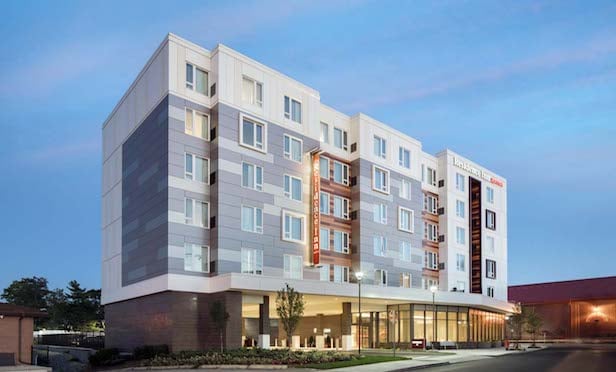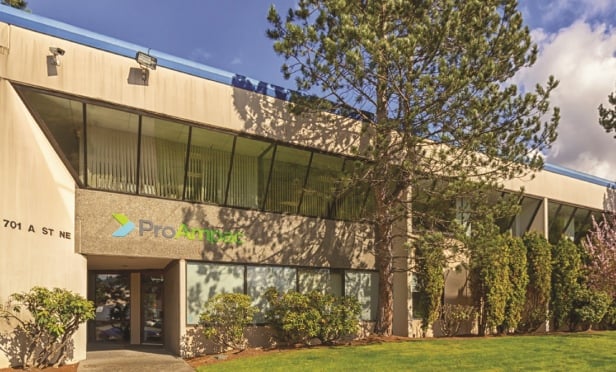SAN DIEGO—The investment market in Los Angeles and Orange County has become so fiercely competitive that investors seeking Southern California opportunities are naturally turning to San Diego, experts tell GlobeSt.com. This is manifesting itself in the brokerage community as well, we have learned. Recently a brokerage team from CBRE's San Diego and Newport Beach offices merged; according to a representative of the firm, "They have had great success with their combined efforts because of the capital from Los Angeles and Orange County wanting to buy in San Diego. They have experienced record-breaking pricing for San Diego. The activity in San Diego used to be between San Diego owners and investors, and now that San Diego is so fundamentally strong in Southern California, investors are flocking and paying prices to which San Diego is not accustomed."
GlobeSt.com spoke exclusively with several industry experts regarding why capital from Los Angeles and Orange County is so attracted to San Diego. Robert Griffith, executive managing director, investment services, for Newmark Grubb Knight Frank, tells us, "As properties in both L.A. and OC continue to be more stabilized and are hitting new highs in occupancy and values, San Diego is the next nearby market to emerge. The market offers a trend of declining vacancies, and value-add opportunities are available as capital continues to seek risk-adjusted returns with upside potential."
Matthew Wallace, a senior associate in Avison Young's Irvine, CA, office, tells GlobeSt.com, "Secondary markets like San Diego and Orange County are becoming ever more appealing as investors recognize the growth opportunities in the areas surrounding the primary markets. Both San Diego and Orange County are seeing record investment-sales volumes for 2015 of $7 billion and $8 billion, respectively."
Wallace adds that the populations for both counties are growing rapidly. "Orange County and San Diego are the fifth and sixth most populous counties in the nation, and these areas are becoming more recognized by national and international investors. Capital investment is taking a natural course as it spills out of the Los Angeles area."
San Diego returns and yields typically trade at a 100 to150 basis-point premium to Orange County and L.A. real estate returns and yields, Matt Pourcho, a VP with CBRE, tells GlobeSt.com. "Capital from Orange County and L.A. is coming here to pick up more attractive yields while still having a real estate investment in a substantial market with great fundamentals in the Southern California marketplace."
Strong investment fundamentals, coupled with slightly higher yields and attractive, below-replacement-cost pricing, are attracting investors from San Francisco, L.A. and Orange County to San Diego, JLL managing directors Lynn LaChapelle and Bob Prendergast tell GlobeSt.com. "Moody's ranks Metropolitan San Diego #9 in terms of GMP growth between 2014 and 2020 (ahead of New York #10, Chicago #11, Boston #14 and Seattle #15), and population growth is anticipated to grow by 5.8% through 2019 (ahead of San Francisco at 4.9%, Los Angeles at 4.0% and New York at 2.6%). San Diego's economy is ever more resilient, with key technology sectors such as life science and defense leading job growth."
LaChapelle and Prendergast add that overall, San Diego historically has provided investors with slightly higher yields due to its "non-gateway" status, and investors are often rewarded with yields between 50 and 100 basis points higher. Also, in many of San Diego's submarkets, rental rates are still below peak rates achieved in 2007-2008. "Properties with in-place rents below historical peaks are trading at or slightly below replacement costs—a key metric for many investors."
San Diego is not altogether inexpensive, the JLL executives say. "In fact, San Diego has several submarkets where properties are trading above replacement costs; however, most submarkets outside of Torrey Pines, Del Mar Heights and UTC are not (yet). Where rents have fully recovered and exceeded peak rates, it's much harder to find high- and mid-rise office properties still trading below replacement value." For investors seeking higher yields, assets in submarkets where rates are poised to recover will provide the most opportunity. "In fact, we are beginning to see many investors beginning to look at Phoenix."
Investors continue to underwrite assets from Seattle to San Diego, and thanks to information and efficient capital markets, investors are remaining extremely disciplined and focused on what appeals to them at this point in the cycle, the JLL execs say. "And, in a nod to history, as pricing begins to exceed previous peak levels, fewer bidders show up in the best and final round. The bonus, however, is that the bidders that do continue to bid are often highly motivated and focused."
Based on an improving economy, the San Diego market provides owners and investors the ability to find value-add opportunities that may not be as available in OC and L.A., says Griffith. "The competition for these two very hot markets has pushed investors who like the allure of Southern California coastal areas to San Diego, a region that offers a great quality of life and a growing life-sciences and biotech market."
San Diego is very strong in defense, biotech, medical device and technology, Pourcho points out. "In regard to the growing defense industry in San Diego, the recent sequestration actually helped San Diego since many defense contractors consolidated into San Diego and grew their footprint. Defense continues to fuel our market significantly. Many may not think of San Diego as a top-tier city, but many large companies have a decent sized footprint in San Diego such as Qualcomm, Intel, HP, Microsoft, Sony, Broadcom, MedImpact, Northrop Grumman, General Atomics, Pfizer, Eli Lily, LPL Financial and Celgene, to name a few."
San Diego's multifamily sector is leading the way in investment-sales volume, just ahead of the office sector, says Wallace. "Home ownership has declined, and the growing population is driving up values of the multifamily inventory. Meanwhile, construction deliveries for multifamily are still climbing toward pre-recession levels.
Wallace adds that pricing for all inventory across the board is climbing, and there is still room for growth. "Investors are seizing opportunities in San Diego before becoming priced out of this location also. San Diego is a draw in its own rite, with dominant industries in tourism, telecommunications, biotechnology, education and defense. The city has a geographical advantage sitting on the Pacific Coast, while neighboring Mexico and the Los Angeles metropolitan area.
As prices get bid up from the market becoming so heated, how will this trend play out? "As values rise and vacancy declines, San Diego will become a more stabilized market on par with L.A. and OC," says Griffith.
Pourcho adds, "We are in process of narrowing the gap between L.A. and OC yields through bringing these investors down from L.A./OC. Yields in San Diego may always trade at somewhat of a discount to L.A./OC, but we will see the gap get smaller in heated markets. There is limited supply of deals on the market below $20 million, with an overabundance of 1031 capital on the demand side. We expect to continue to have bidding wars from capital in L.A./OC."
Demand for an investment hold in San Diego is expected to remain strong, even as trading in general begins to take on a slower pace, says Wallace. "There is still some room for pricing growth in 2016, but pricing may flatten out toward the following year. If the Southern California market cools down at some point, San Diego would be expected to move in concert with the rest of the region, while maintaining resilience in desirability."
Griffith says there continues to be more unallocated capital than available product for sale in San Diego. "Both stabilized product and certainly value-add or opportunistic opportunities are getting harder to find. We expect to continue to see upward pressure on pricing through 2016."
Meanwhile, investors from all over the country are pouring into San Diego. Wallace points out that one of the largest sales of the year was Westfield Carlsbad, purchased for $170 million by an investor from New York. Also at the top of the sale list is a Sorrento Mesa office/industrial portfolio purchased for $163 million by an investor from Georgia. And, the Aventine in UTC was purchased for $150 million by an investor from Massachusetts.
According to Pourcho, "Given our proprietary database of Southern California private capital, more than 90% of our San Diego transactions were sold to buyers in OC/L.A., and we set several pricing records in San Diego this year. Our team expects to transact more than 50 deals this year, which will be a record for our team, and we continue to see substantial momentum pushing pricing for our sellers."
© 2025 ALM Global, LLC, All Rights Reserved. Request academic re-use from www.copyright.com. All other uses, submit a request to [email protected]. For more information visit Asset & Logo Licensing.







